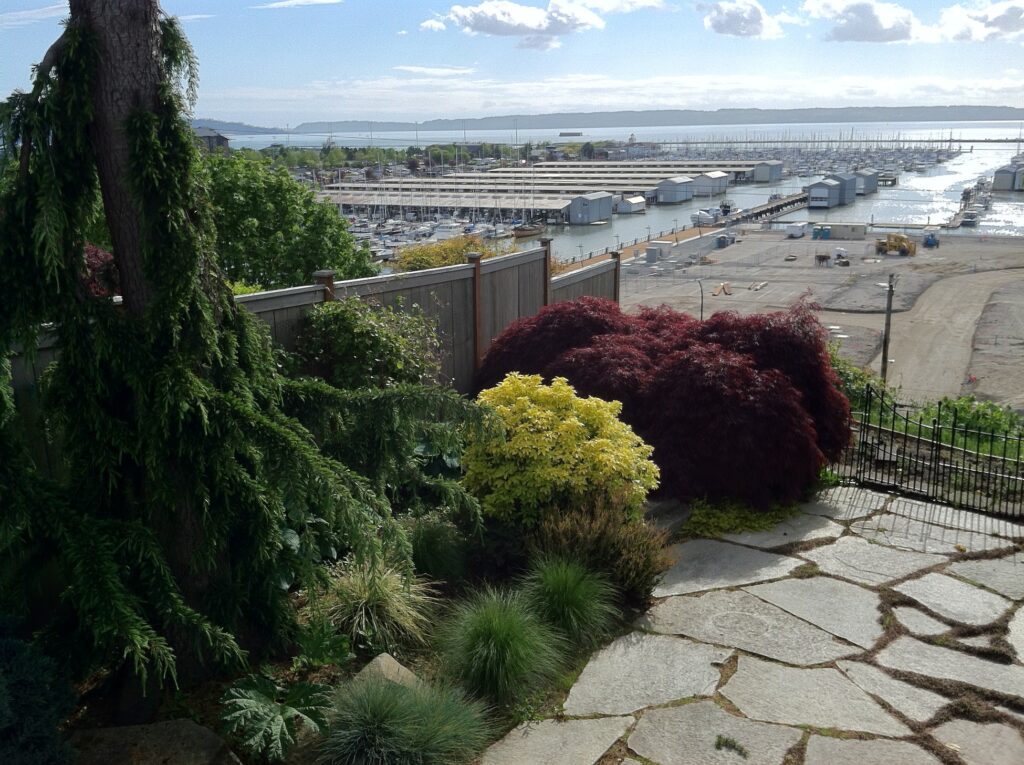
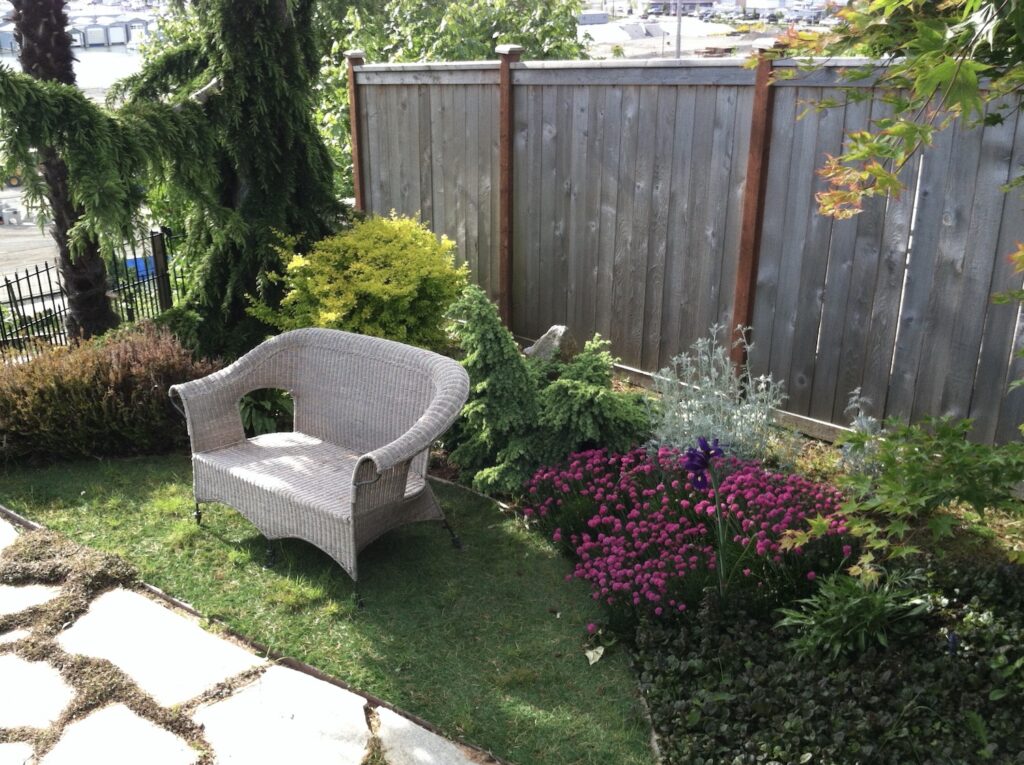
The garden in back of our new home already had many of the zen elements found in Japanese gardens. A sense of an enclosure and privacy was created by tall fences along the north and south property lines, and a “bower” of maple branches arched over a sitting area on the lower deck. Mature plants were already in placed including many used in traditional Japanese gardens, such as a weeping red maple and a variety of conifers. Also present was the element of “borrowed scenery” since the garden had a sweeping view of Port Gardener, Whibey and Hat Islands, and the distant Olympic Mountains.
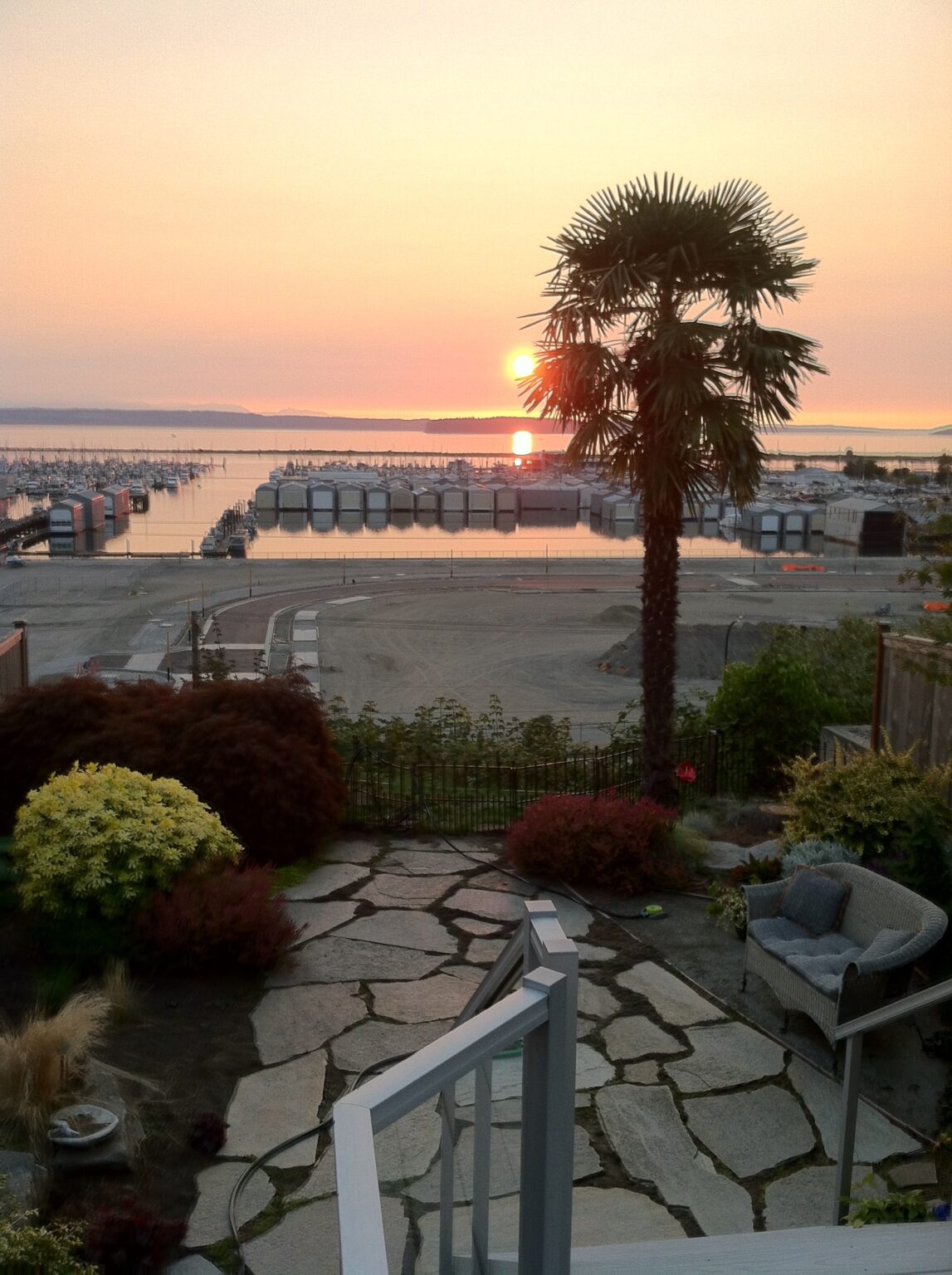
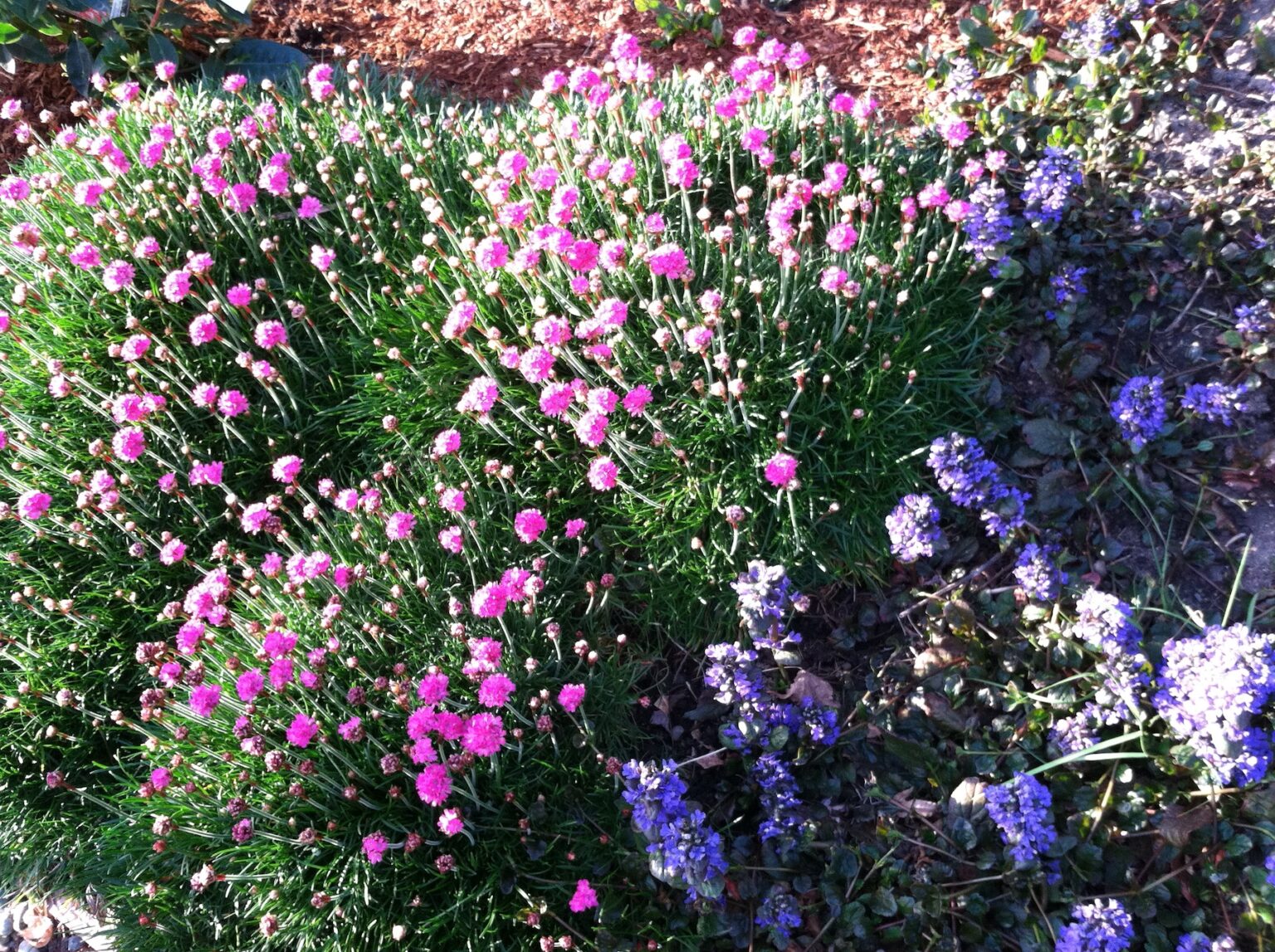
There were several changes
that we planned in the back garden, some designed to reduce maintenance , and others to focus on key design elements.. Our first priorities
were to eliminate two more (!) weeping sequoias with their daily needle mess, dig up weedy fake grass by the flagstone patio, and replace it with gravel. We also wanted to simplify the garden by limiting the plant varieties to those that would provide all-season interest with contrasting textures and mass sweeps of color. Some of the plants we kept were not typically found in Japanese gardens, but they met our criteria, even the palm tree!!

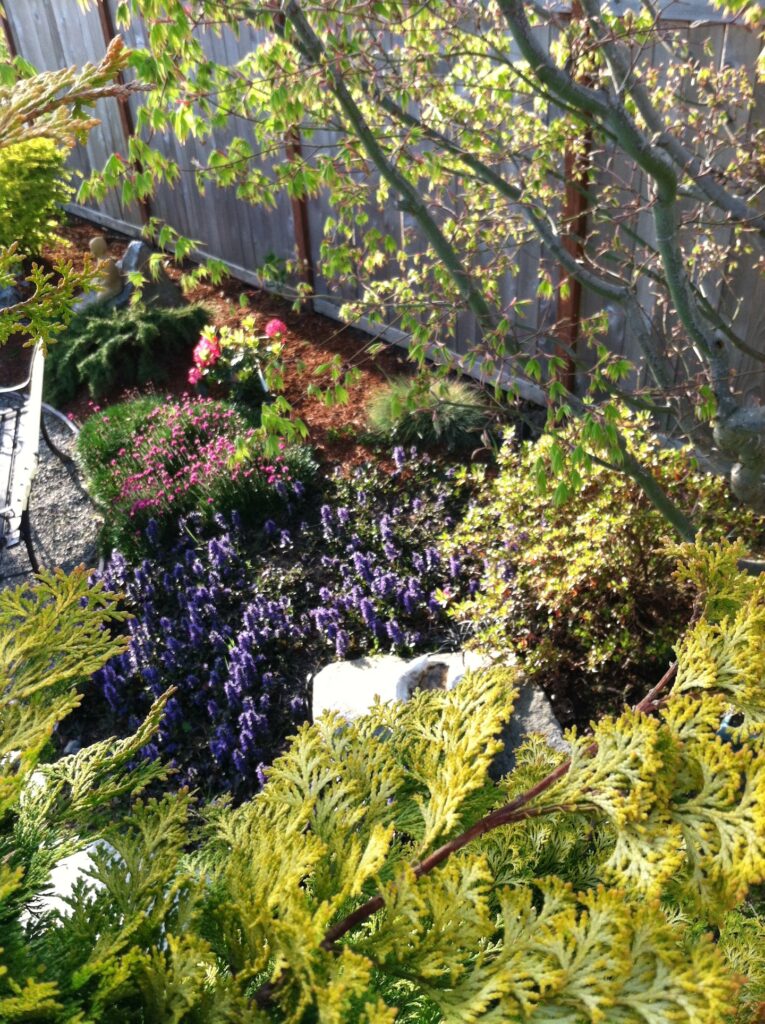
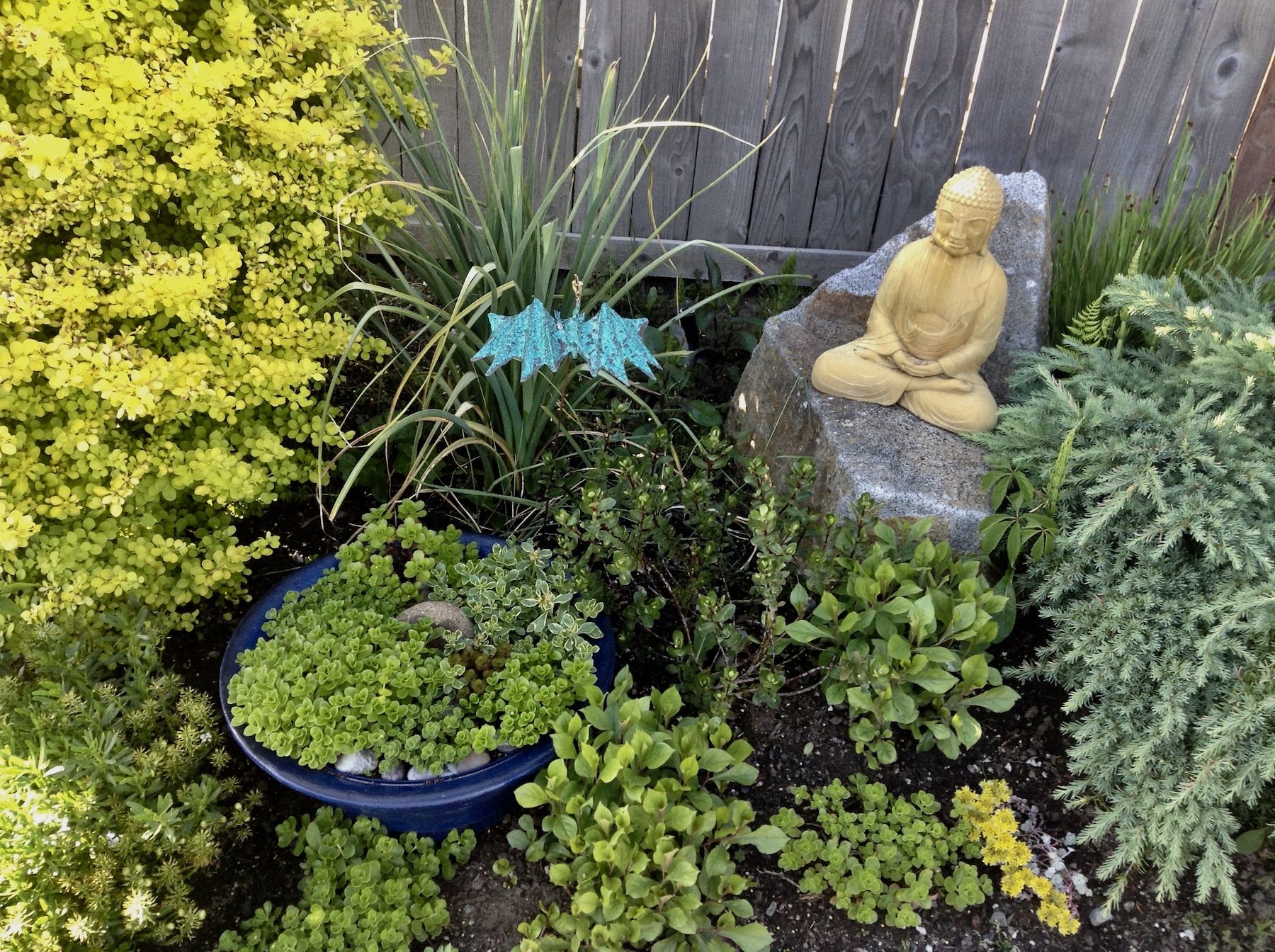
After removing or pruning back several existing plants we had a clear view of large irregular rocks placed strategically throughout the borders. They were striking features because of their size, shape, and symbolism.
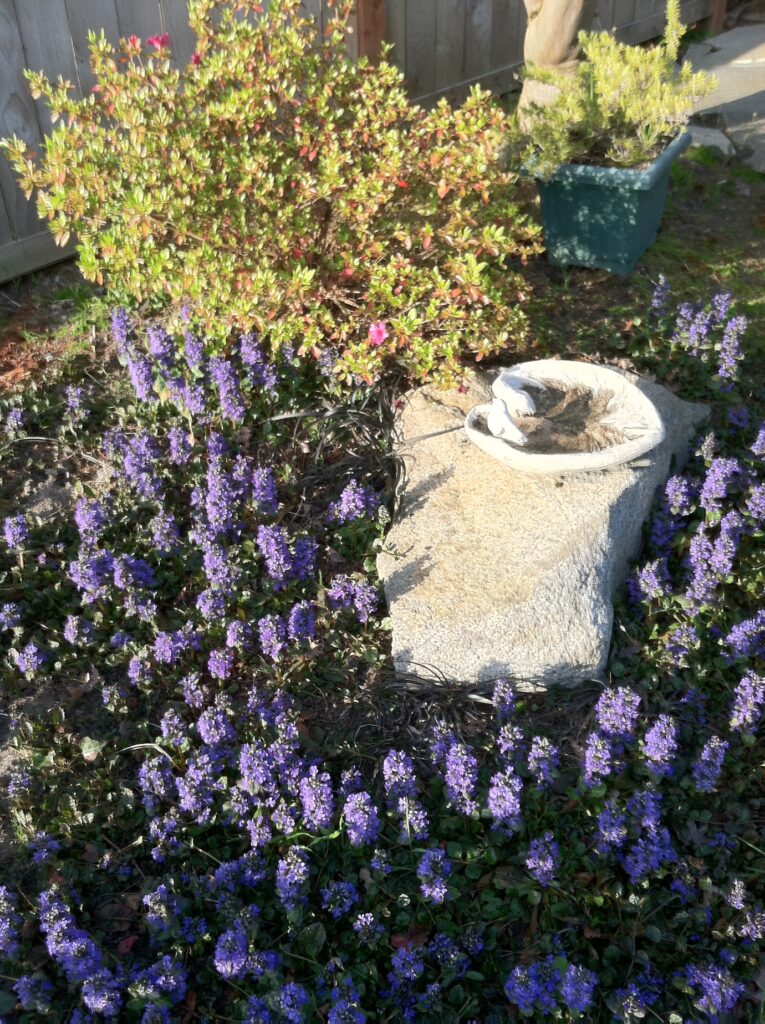
Our garden was well on its way to becoming what we envisioned. My wicker lounge was placed by the maple “bower,” a transplanted “Black Beauty” elderberry was blooming outride the black wrought iron fence on the bluff, a comfortable chair was in the shade of the maple and blooming cotoneaster, and another small seating area was on the new gravel by the north border.
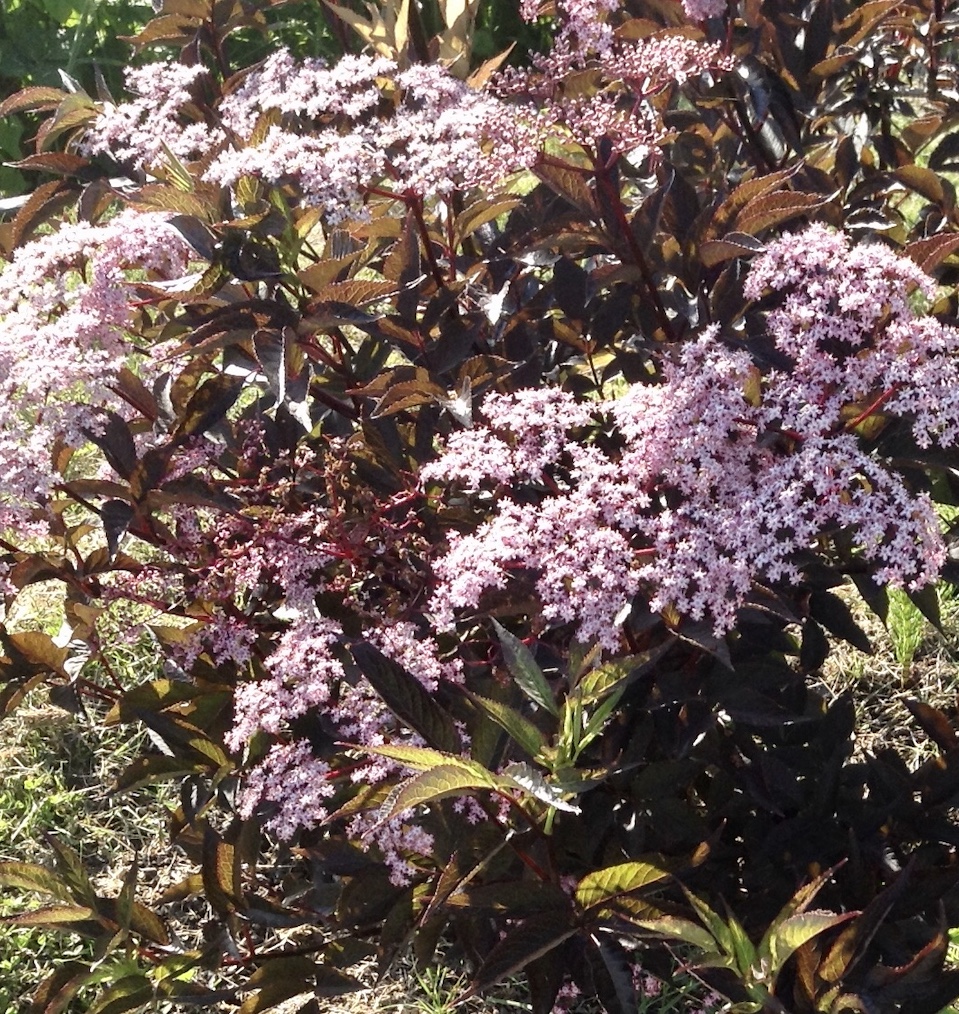
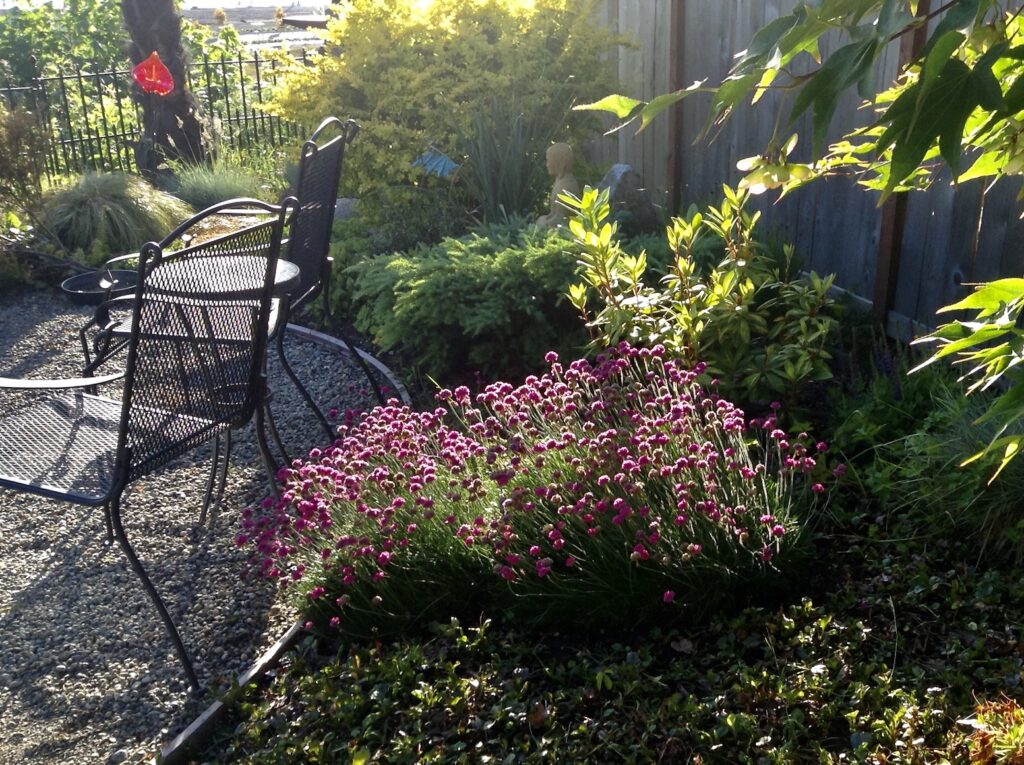
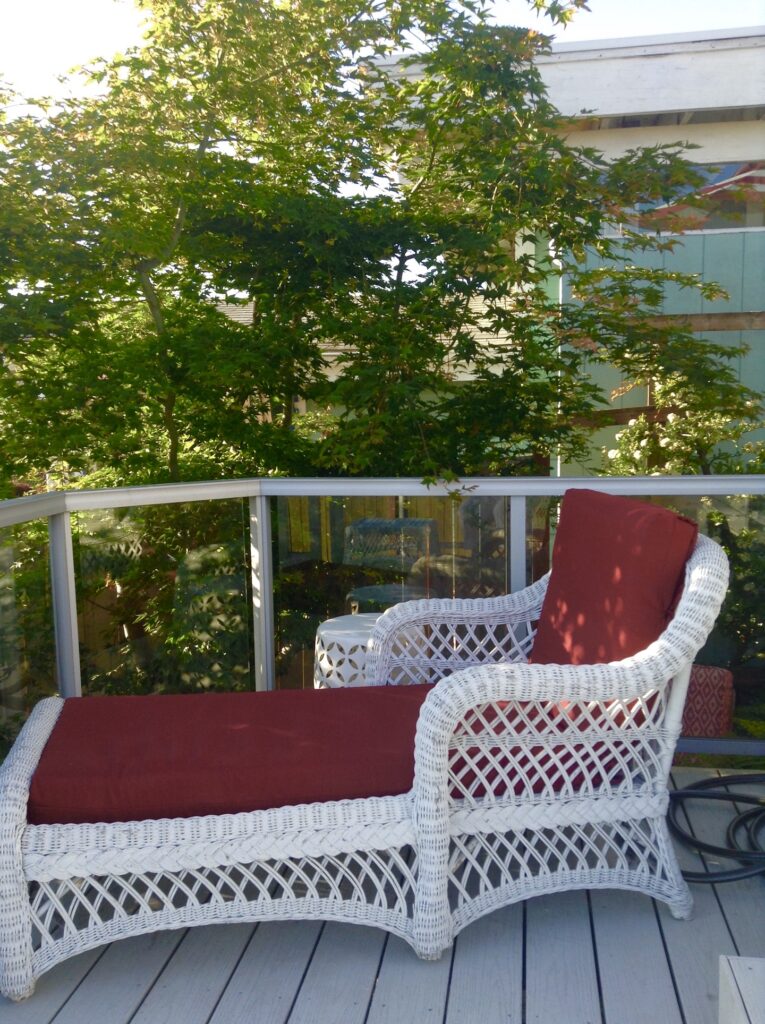
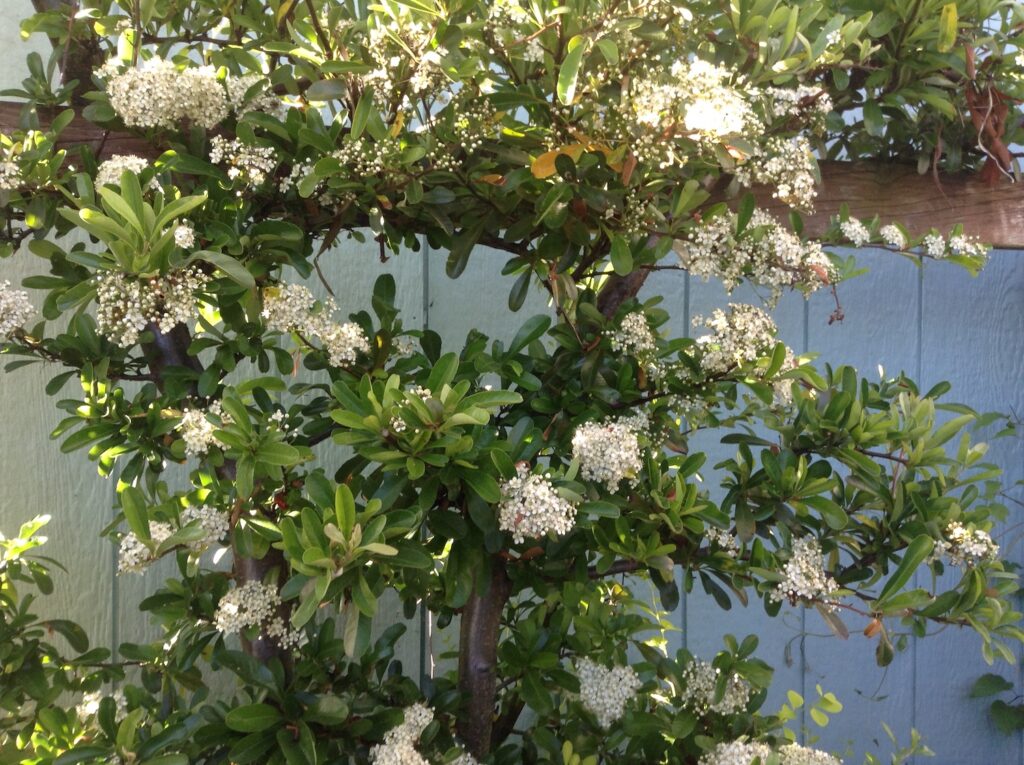
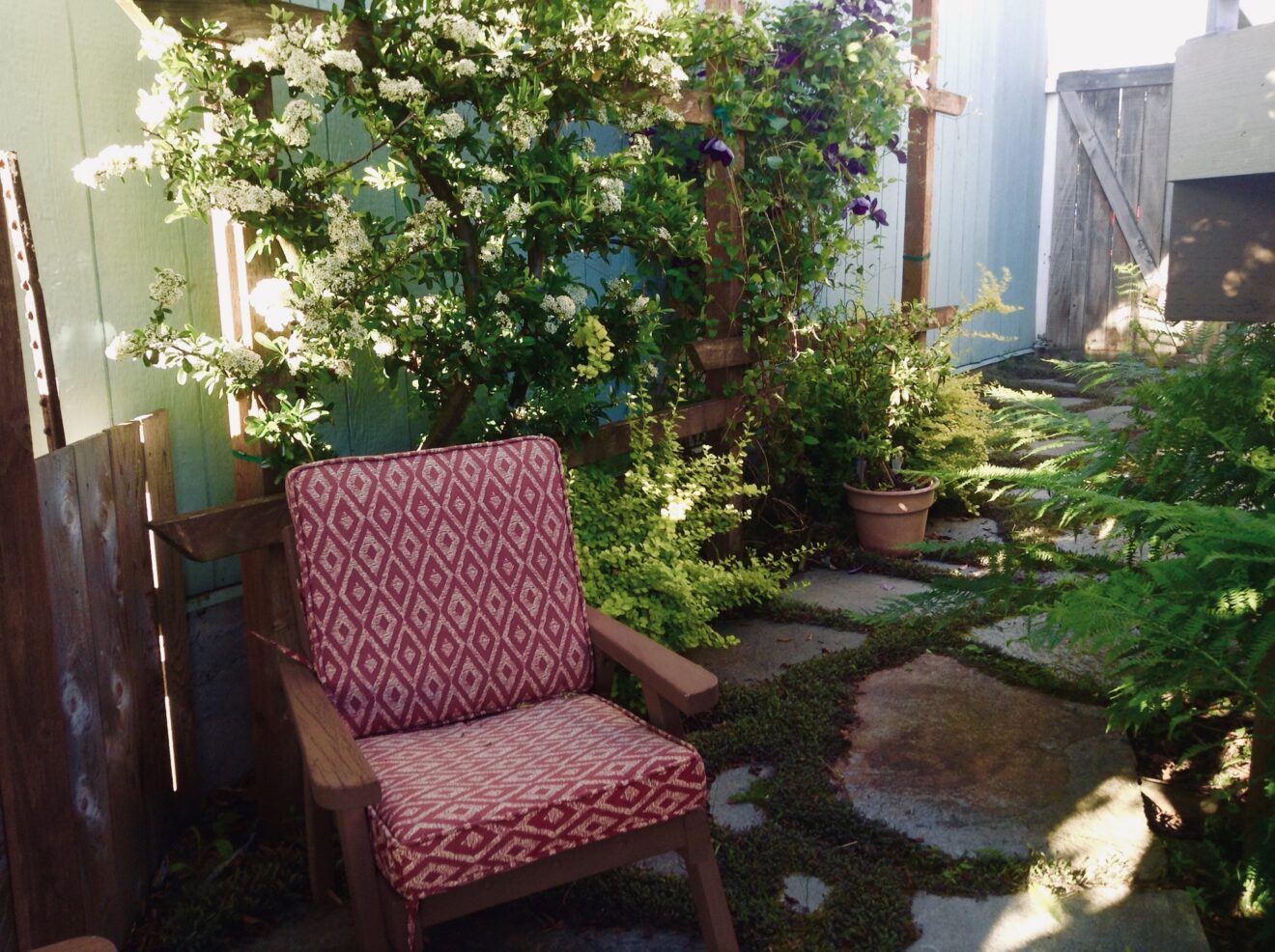
AND THEN . . .!

On September 9, the storm drains in front of the house were unable to handle two severe rainstorms a few hours apart. Our front garden was flooded and torrents of water poured from the knee deep water on the through streets north and south areas along the house, then engulfing the back garden. The churning river of water destroyed the bluff garden and retaining wall.
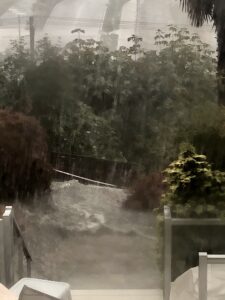
By the spring of 2020 we had repaired most of the flood damage to the main garden. We replaced the gravel patio 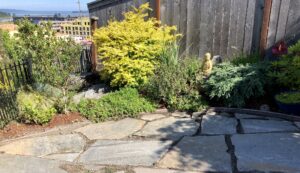 with new flagstones. Our son Karl and Tim rescued and transplanted the “Black Beauty” elderberry that had washed down the bluff along with several hydrangeas and a forsythia. With help from our neighbor Clinton, Tim was able to to bring up sections of wrought iron fence to form a barricade along the flagstone edge before the steep drop-off.
with new flagstones. Our son Karl and Tim rescued and transplanted the “Black Beauty” elderberry that had washed down the bluff along with several hydrangeas and a forsythia. With help from our neighbor Clinton, Tim was able to to bring up sections of wrought iron fence to form a barricade along the flagstone edge before the steep drop-off.
The garden was beautiful and ready for summer enjoyment once again!
And then . . .!!
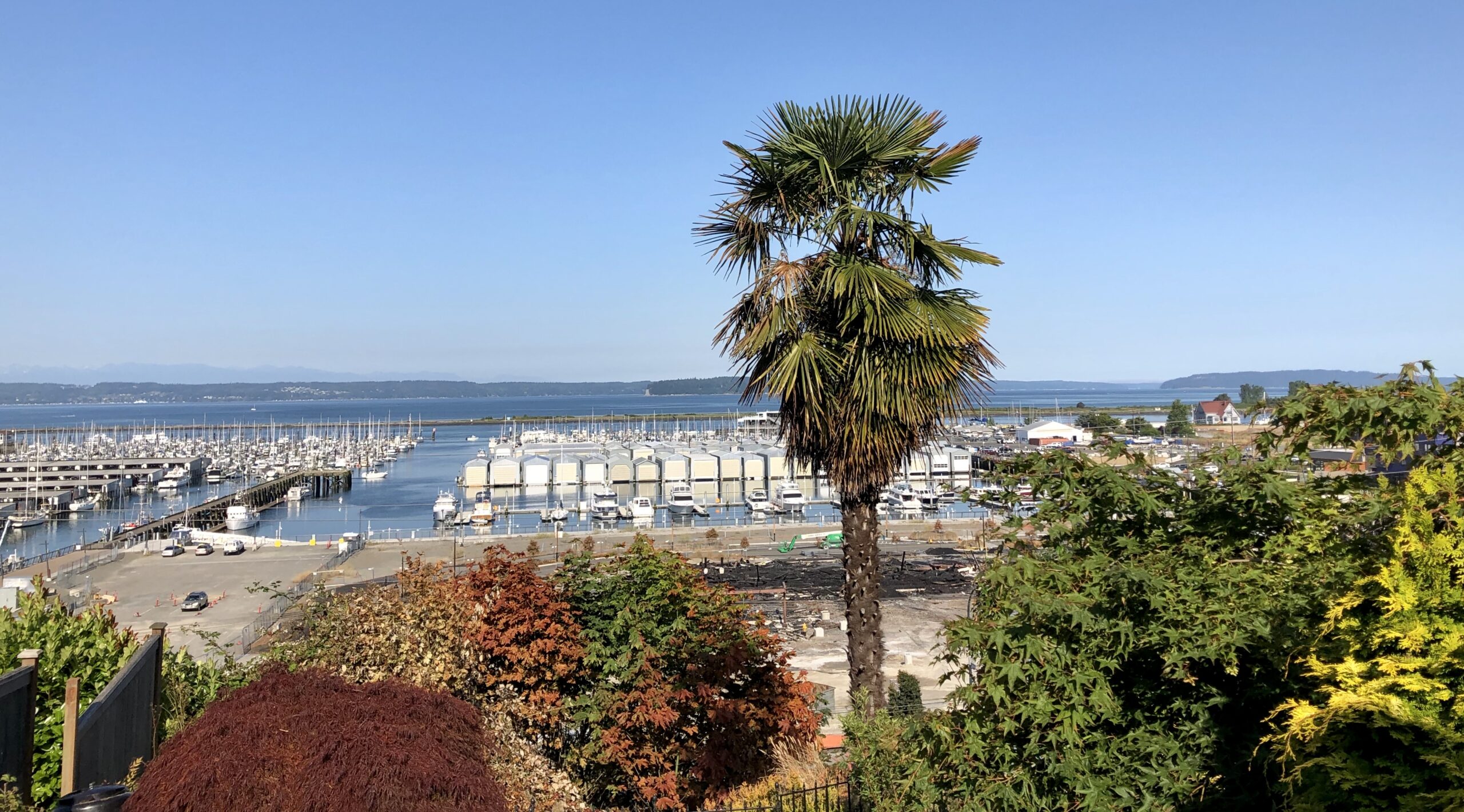

The apartment building under construction just below and west of our bluff exploded with fire in late July, sending sparks and cinders up the bluff to catch some trees, brush, and even lower palm tree fronds on fire. Thanks to many neighbors with hoses, damage to garden and structures was limited to spark burns on deck, stairs, and some outdoor furniture. It could have been worse!
We have a beautiful new deck, and our garden survives and thrives!
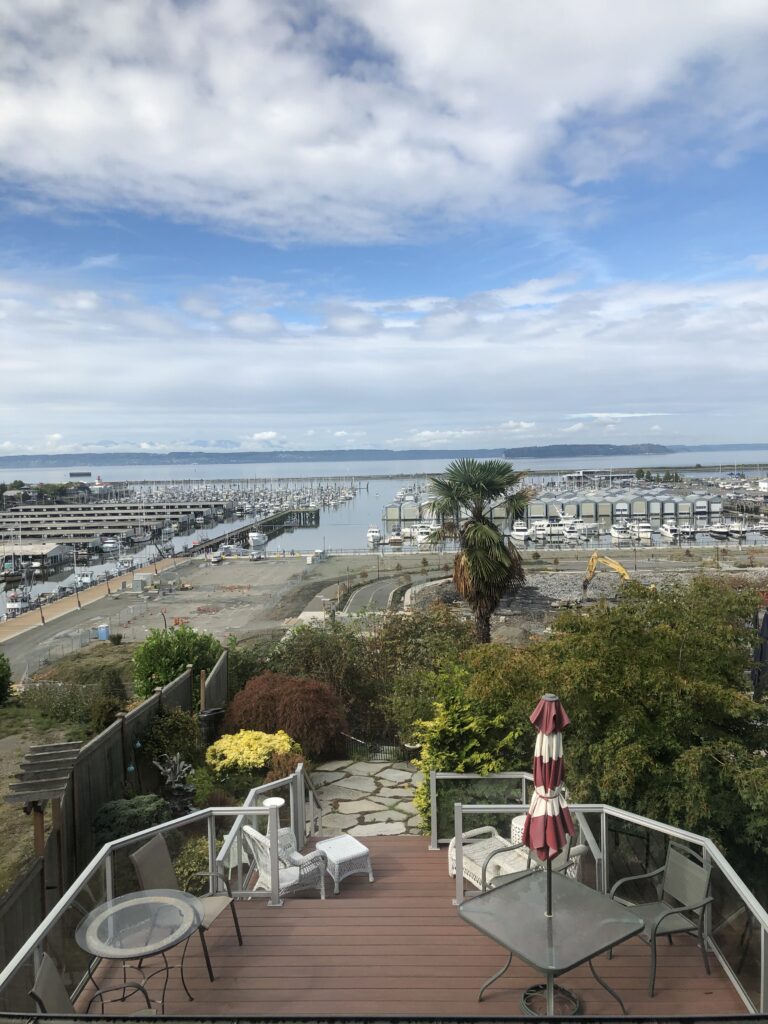
To view Olson Gardens II – click here
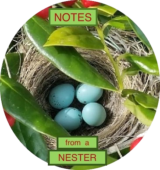
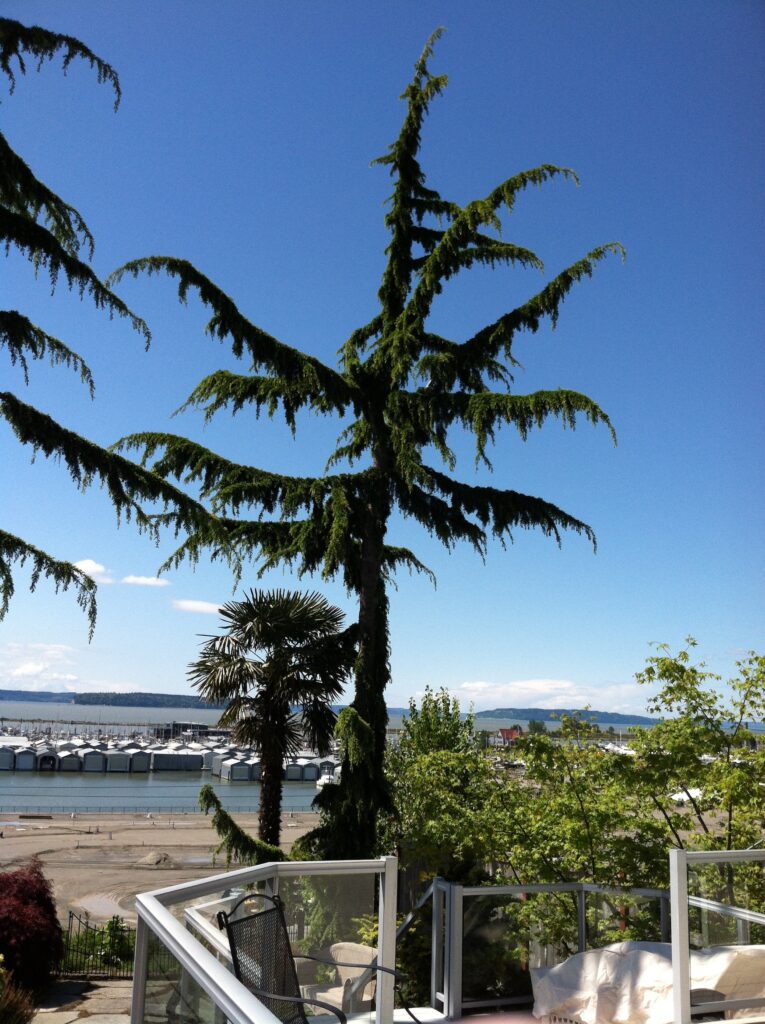

Looks beautiful. Someday if and when we have so much stay home and alone time I will see it in person. I really like all the plants in your garden cept for the Palm tree. I see others in the NWest and they never seem to look healthy here and most seem out of place. … just my biased opinion. Thanks for contributing.
No question here about who has a “green thumb”!!! All looks so inviting! Jerry and I have always greatly admired your creative garden skills! And, that includes your wonderfully obliging “assistant!”